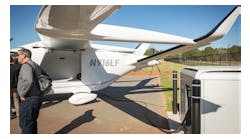PULLQUOTE:
… the primary distinctions between actions under Parts 13 and 16 are rooted in issues of formality, legal standing to bring a cause of action, and the potential for and type of recovery available to a complainant.
In the first three articles in this series, we discussed some of the more common grant assurances that are disputed between airport sponsors and tenants. Our fourth and fifth articles focused on preserving your own documents and evidence, as well as seeking out evidence from your adversaries. But there’s more. The next consideration is how best to employ your resources and evidence to answer the question: Do you proceed under 14 Code of Federal Regulations (C.F.R.) Part 13 (“Part 13”) or under 14 C.F.R. Part 16 (“Part 16”)?
Defining the Differences
As a general matter, the primary distinctions between actions under Parts 13 and 16 are rooted in issues of formality, legal standing to bring a cause of action, and the potential for and type of recovery available to a complainant.
Part 13 :The Less Formal Option
Part 13 is the less-formal option for filing a complaint with the FAA and, as a general matter, the only avenue available to those complainants who cannot satisfy the standing requirements for Part 16 (discussed below). Complaints may be made in writing, or even orally, pursuant to Subsection 13.1, to any FAA regional and/or district office. Typically, all such complaints are relayed to FAA regional staff for relatively informal investigation, as warranted.
This informal investigation will usually entail correspondence from the FAA investigator or specialist to the airport sponsor wherein a copy of the complaint is forwarded to the airport sponsor for review and response. Thereafter, the FAA personnel handling the dispute will review the responses from the airport sponsor and determine:
- Whether the dispute is within the jurisdiction of the FAA, and
- Whether the allegations in the complaint are supported by sufficient evidence to support further investigation.
If the FAA determines that neither of these conditions are satisfied with respect to any of the individual allegations in the complaint, those allegations will be dismissed without further action. The remaining allegations, if any, will continue to be investigated.
Following any additional investigation, the handling FAA regional office will issue an informal determination setting forth the region’s position on the allegations in the complaint. Of particular note, there is no deadline imposed under Part 13 for the issuance of an informal determination by the FAA.
Subsection 13.5 of Part 13 does contemplate the filing of formal complaints seeking “an appropriate order or other enforcement action” with the Office of the Chief Counsel, Enforcement Docket in Washington, DC. In the event, however, that the complaint does not observe the formalities required under Subsection 13.5, the FAA will simply treat it as an informal report pursuant to Subsection 13.1. If the complaint does satisfy the formal requirements, the complaint will be docketed and mailed to the party against whom the complaint is levied. Thereafter, the respondent is afforded 20 days from receipt of the complaint to answer. Following receipt of respondent’s answer, the administrator determines whether there are reasonable grounds for investigating. If no such reasonable grounds exist, the administrator may simply dismiss the complaint without a hearing or further investigation.
However, if the administrator determines that reasonable grounds exist for further investigation, the matter may be pursued informally or a more formal order of investigation may be issued. Thereafter, if the additional investigation substantiates the allegations in the complaint, the administrator may issue a notice of proposed order or other enforcement action as appropriate.
While Part 13 does contemplate the potential for formal investigations, practical experience demonstrates a trend toward the less formal handling of such matters. To this end, the recommended approach in Part 13 matters is to submit a written Part 13 complaint with copies of any and all supporting documentation. Upon receipt of the complaint, the FAA will assign the matter internally for investigation.
Part 16 – The More Formal Option
Part 16 affords the more formal avenue for pursuing claims against an airport sponsor, with a system more akin to litigation in a traditional court setting. There are set guidelines and deadlines for pleading (up to and including certifications of pleadings and very stringent filing requirements), discovery guidelines to obtain evidence, and the opportunity in some instances for a trial-like hearing.
The formal requirements for an initial complaint are set forth at Subsection 16.23. It is imperative that a complainant carefully follow the rules, as failure to observe the formalities and requirements set forth therein may, and likely will, result in administrative dismissal.
Of particular note, there are two primary requirements for standing, or the legal ability to initiate and pursue, a Part 16 action:
- You (as an individual or an entity) must have been or must currently be “directly and substantially affected” by the alleged noncompliance of the airport sponsor as to the grant assurances; and
- You (as an individual or an entity) must, prior to filing a Part 16 complaint, initiate and engage, in good faith, efforts to resolve your issues with the airport sponsor informally. Any Part 16 complaint must include a certification that “substantial and reasonable good faith efforts to resolve the disputed matter informally prior to filing the complaint have been made and that there appears no reasonable prospect for timely resolution of the dispute.”
With regard to the first requirement, any person or entity doing business with an airport and paying fees and/or rentals to the airport is generally considered directly and substantially affected by the airport sponsor’s conduct. This includes circumstances of revenue diversion where airport revenue, in contravention of 49 U.S.C. 47107(b), is used for purposes other than for the capital and/or operating costs of the airport, the local airport system, or other local facilities owned or operated by the airport owner or operator, and directly and substantially related to the air transportation of passengers or property.
Further, and as more fully described in the first three articles in this series, tenants of federally funded airports, and in particular Fixed Base Operators (FBOs), are afforded an even greater range of issues upon which to claim standing to pursue a Part 16 action against an airport sponsor (e.g., inequitable application of the minimum standards to airport tenants; improper dictation of FBO rate structures; and the exercise of an impermissible exclusive right, just to name a few).
We next turn to the second requirement, namely a certification of pre-action efforts at resolution. This requirement may be satisfied by well documented informal settlement efforts between and among the parties directly, or through more formal attempts at mediation, arbitration, use of a dispute resolution board, or some other form of third-party intervention. Regardless of the type of settlement effort(s) attempted, those efforts are all at the parties’ own expense. It bears noting that in accordance with Subsection 16.22, the FAA airport district office, FAA airports field office, or FAA regional airports division responsible for administering federal financial assistance to the airport sponsor is available upon request to assist with efforts at pre-action informal resolution.
Choose Carefully
The primary consideration when electing between pursuing an action under Parts 13 and 16 is whether you have standing to pursue a Part 16 action. In short, are you legally eligible to file a Part 16 action? As an existing airport tenant, the answer is likely: Yes. You’re then in the fortunate position of having a choice between the nuances of the Part 13 and Part 16 processes.
As an airport user, the question becomes a bit more complicated. As a prospective airport tenant and/or user, the question becomes riddled with legal pitfalls. If you believe you may have a cause of action against an airport sponsor, your best course is to contact counsel familiar with the FAA airport dispute resolution process as early as possible to determine your best avenue for recourse and to identify the steps you’ll need to take in order to resolve the dispute quickly.
BIO: Paul A Lange founded and leads the law offices of Paul A. Lange LLC with offices in Conn. and N.Y. The firm practices nationwide and internationally in various aviation-related legal matters, including airport development, financing, regulatory enforcement matters, and disputes.
Megan Bryson is an attorney at the firm whose practice includes airport matters. www.lopal.com


